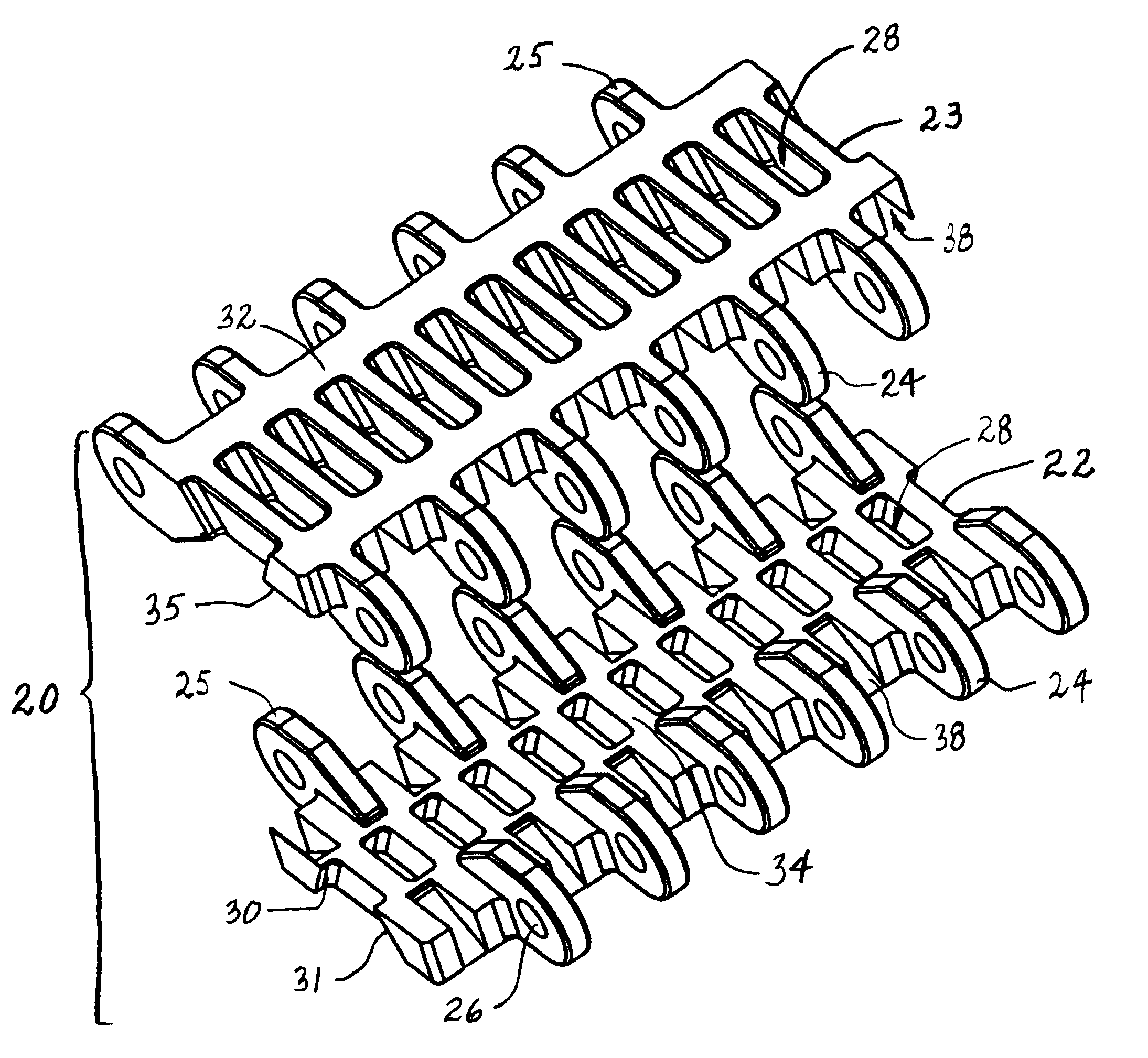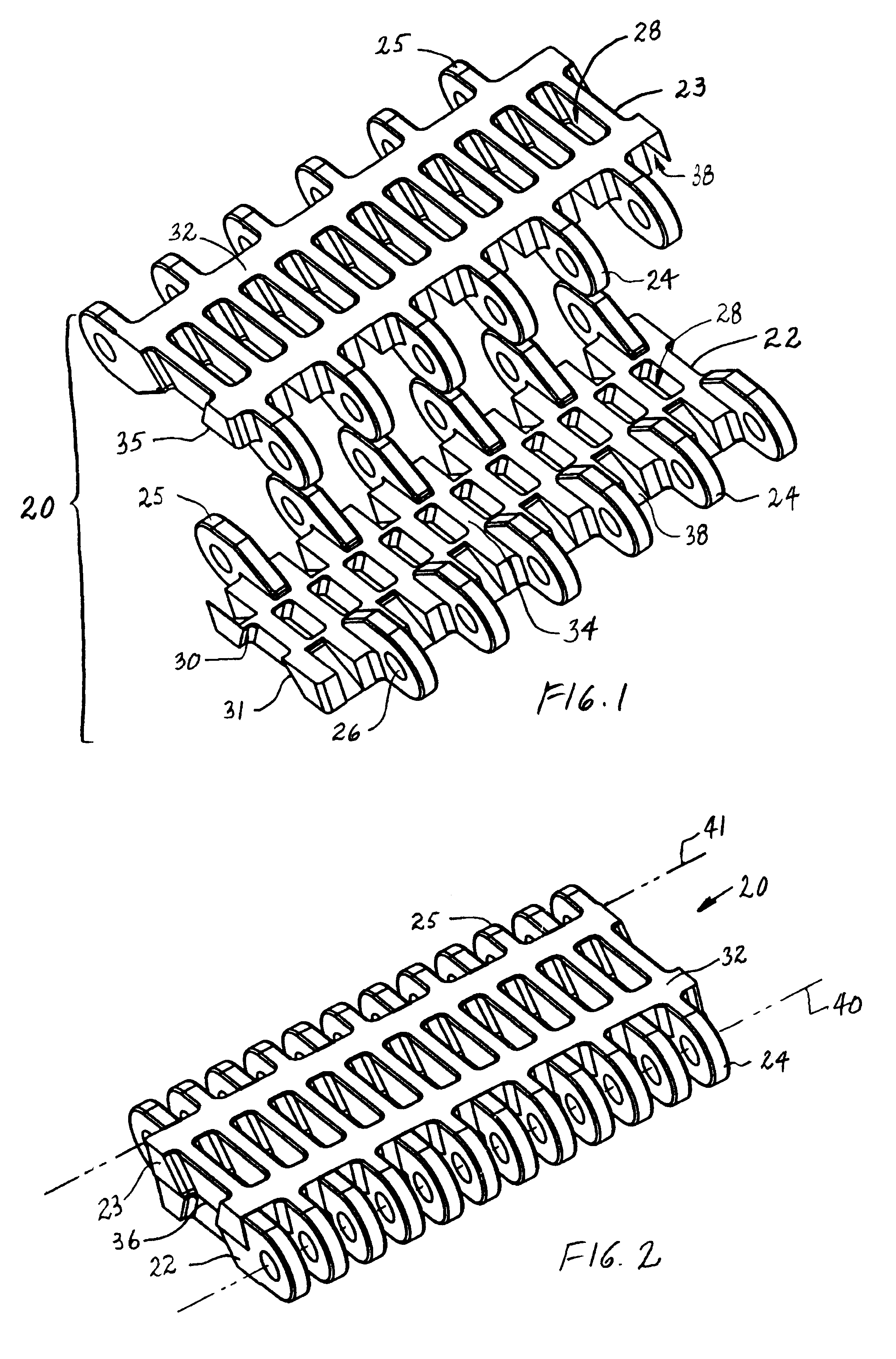Modular conveyor belts with split belt modules
a conveyor belt and module technology, applied in the direction of conveyor parts, rollers, transportation and packaging, etc., can solve the problems of reducing the beam strength of the belt, slipping of the belt, and the seams in each row reducing the beam strength of the row, so as to increase the beam strength
- Summary
- Abstract
- Description
- Claims
- Application Information
AI Technical Summary
Benefits of technology
Problems solved by technology
Method used
Image
Examples
Embodiment Construction
[0023]A split module for use in a modular conveyor belt having features of the invention is shown in FIGS. 1 and 2. The split module 20 is, in this example, made up of two pieces: a first piece 22 and a complementary second piece 23. Each piece includes first and second sets 24, 25 of hinge eyes along opposite first and second ends of the pieces. In this version of the split module, each piece has the same number of hinge eyes, six, along each end. As can also be seen, the first and second pieces are substantially identical in structure. The difference is that the two pieces are mirror images of each other. Each of the hinge eyes includes an aperture 26 aligned with the apertures in the other hinge eyes along that end. The aligned apertures receive a hinge pin that connects the pieces together and with other such split modules to form a conveyor belt. Each piece also has a series of trapezoidal cavities 28 spaced apart across the module body. Angled side surfaces 30, 31 of the cavit...
PUM
 Login to View More
Login to View More Abstract
Description
Claims
Application Information
 Login to View More
Login to View More - R&D
- Intellectual Property
- Life Sciences
- Materials
- Tech Scout
- Unparalleled Data Quality
- Higher Quality Content
- 60% Fewer Hallucinations
Browse by: Latest US Patents, China's latest patents, Technical Efficacy Thesaurus, Application Domain, Technology Topic, Popular Technical Reports.
© 2025 PatSnap. All rights reserved.Legal|Privacy policy|Modern Slavery Act Transparency Statement|Sitemap|About US| Contact US: help@patsnap.com



